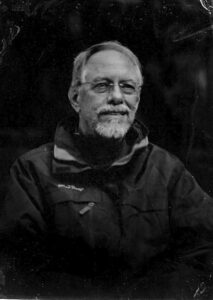[et_pb_section fb_built=”1″ admin_label=”section” _builder_version=”4.16″ global_colors_info=”{}”][et_pb_row admin_label=”row” _builder_version=”4.18.0″ background_size=”initial” background_position=”top_left” background_repeat=”repeat” hover_enabled=”0″ global_colors_info=”{}” _module_preset=”83f49821-bb4c-4b37-9bed-e95bff20795c” sticky_enabled=”0″][et_pb_column type=”4_4″ _builder_version=”4.16″ custom_padding=”|||” global_colors_info=”{}” custom_padding__hover=”|||”][et_pb_text _builder_version=”4.17.4″ _module_preset=”cd5b2480-f45f-40e2-bacf-92ad0d5c30e9″ global_colors_info=”{}”]
Champagne Opening Reception and Gallery Hours
Join Gary to celebrate the opening of his show with a champagne reception and artist talk Friday, July 15 from 7–9:00 pm at the Art Alliance Center.
The gallery will be open 11:00am–5:00pm Saturday, July 16 and Sunday, July 17.
This event is free and open to the public. Artworks may be for sale.
CarpeLucem — France in SuperBlue
In 2019 I was privileged to go to France with WVU’s spring break GPS program class led by WVU professors Michael Sherwin (photography) and Rhonda Reymond (art history).
I often constrain my artwork projects believing there is more freedom in constrained artwork. So in this case I decided to take only one small amateur digital camera converted to SuperBlue and my iPhone. This would allow me a unique different view of France. In my camera (Nikon P7100) the normal UV blocking filter was replaced with the SuperBlue filter which allows only specific Blue, InfraRed, and UltraViolet light frequencies to pass. The human eye can only see the blue light, not the infrared or ultraviolet. Digital camera sensors can ‘see’ a broad range of frequencies and are normally filtered to eliminate all but red, green, and blue. I recorded all images in the Nikon RAW file format which interprets the SuperBlue filtered image in terms of the normal Red, Green, and Blue. Of course this is a somewhat arbitrary false color which varies based on many factors like the particular camera/sensor/filter and post processing. As I traveled and shot the images I was very pleased with this camera’s SuperBlue interpretation of the view and decided that was the interpretation I wanted to show. It was not without challenges. I realized that the recordings had issues due to the fact that these three different light frequencies focus at different focal planes. Plus many images were made in low-light that allowed camera movement blur on top of the focus issues. However I liked the results – I adapted and persisted and made many images in SuperBlue, only a few are selected here. I think the French artists of the long 19th century would find my images interesting in many aspects. The color images are impressionistic. The compositions are sometimes tilted. They are very ‘optical’ and based on light and vision theory as seen and unseen. Natural landscapes would have interested the Barbizon School of artists.
see this quote:
Despite differing in age, technique, training, and lifestyle, the artists of the Barbizon School collectively embraced their native landscape, particularly the rich terrain of the Forest of Fontainebleau. They shared a recognition of landscape as an independent subject, a determination to exhibit such paintings at the conservative Salon, and a mutually reinforcing pleasure in nature. Alfred Sensier, close friend and biographer of Barbizon painters Théodore Rousseau and Jean-François Millet, wrote of the romantic attraction of the Forest of Fontainebleau: “They had reached such a pitch of over-excitement that they were quite unable to work… the proud majesty of the old trees, the virgin state of rocks and heath… all these intoxicated them with their beauty and their smell. They were, in truth, possessed.”
On my return and in my quick preparation to show my work to my faculty and fellow students, I enjoyed the transition between the grey-scale and the color SuperBlue images. So in addition to printing the images as monochrome and color SuperBlue, I put together a video that presents the work as I enjoyed seeing it. Basically going from a grey screen, to monochrome SuperBlue image, slowly transitioning to color SuperBlue image, and back to grey screen in between. This is to allow the eye to adjust and not be affected by after-image color reversal. A music faculty friend suggested the music track for the video: Samuel Barber : Adagio for Strings. My interpretation is not the conventional infrared artist’s interpretation. Additionally the uncropped and minimally edited images are my vision/composition. I think they hold up to outside inspection even though they break many conventional ‘rules’ of photography. It’s my vision and interpretation.
—Gary Schubert
[/et_pb_text][et_pb_gallery gallery_ids=”280160,280161,280162,280164,280165,280166″ posts_number=”6″ _builder_version=”4.17.4″ _module_preset=”default” global_colors_info=”{}”][/et_pb_gallery][et_pb_text _builder_version=”4.17.4″ _module_preset=”cd5b2480-f45f-40e2-bacf-92ad0d5c30e9″ global_colors_info=”{}”]
About Gary Schubert
Artist Bio
 Gary Schubert is an artist, painter, printmaker, photographer, digital artist, and art collector. Born in Wheeling and raised in Morgantown, WV, Schubert holds MFA (Master of Fine Arts) in Painting and MS (Master of Science) in Computer Science degrees from West Virginia University. He studied painting under Tom Nakashima and photography under Lucien Clergue. His work is in many private and public collections, including The Huntington Museum of Art and The Whitney Museum of American Art.
Gary Schubert is an artist, painter, printmaker, photographer, digital artist, and art collector. Born in Wheeling and raised in Morgantown, WV, Schubert holds MFA (Master of Fine Arts) in Painting and MS (Master of Science) in Computer Science degrees from West Virginia University. He studied painting under Tom Nakashima and photography under Lucien Clergue. His work is in many private and public collections, including The Huntington Museum of Art and The Whitney Museum of American Art.
Schubert is a retired Professor of Art and Computer Science (Alderson Broaddus University). His favorite classes to teach are Media Computation, Digital Arts and Photography. He is a Senior Life Member of the Association for Computing Machinery and a SIGGRAPH Pioneer (Digital Effects, Inc. NYC). Additionally, he is a member of the Art Alliance of Central PA and on the Bellefonte Art Museum Artists Registry of Centre County Pennsylvania, as well as the West Virginia Artists Registry.
Artist’s Statement
My artwork is about the world of the mind, the world of science, and of course, the world of art. I work in many different traditional and non-traditional media, often blending them in new and experimental ways. My favorite genres are portrait, landscape, architecture, figure, and abstract. I try to have the light play a major part in my images. My hope is that the engaged viewer will respond to my work by finding in themselves an equivalent feeling to mine when I made these images.
I am very interested in experimental and alternative techniques and processes for making art: InfraRed, Super Blue, Pinhole, Color Laser printing, Cyanotype, Van Dyke, and many others. I also collect art from student artists, my fellow artists, friends and instructors, unknown, famous, almost famous, and soon to be famous artists.
This show presents one of my favorite topics, France in SuperBlue. I am very experimental in my image-making and work in a variety of photo technologies, techniques, styles and looks. SuperBlue images are recorded by digital sensors recording only blue, infrared, and ultraviolet light.
[/et_pb_text][/et_pb_column][/et_pb_row][/et_pb_section]

